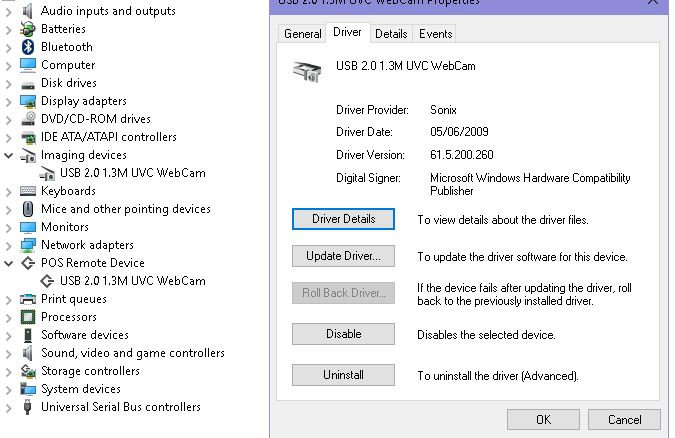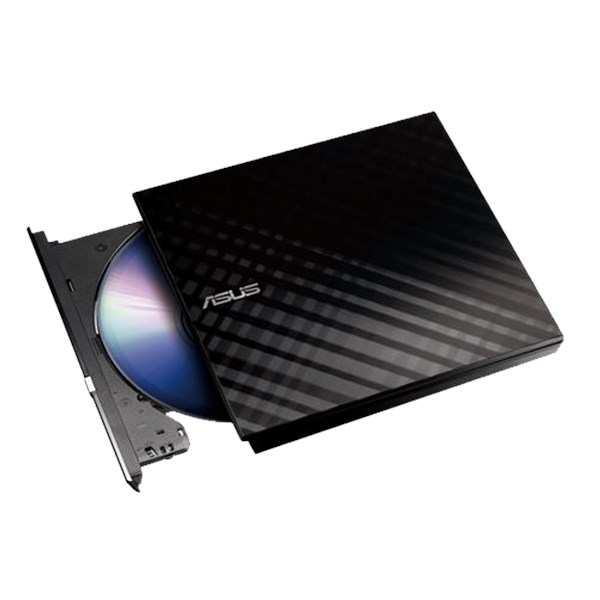Realtek USB Card Reader is a freeware software download filed under hardware software and made available by Realtek for Windows. The review for Realtek USB Card Reader has not been completed yet, but it was tested by an editor here on a PC and a list of features has been compiled; see below.
If the USB Keyboard on your Windows computer is not being recognized or not working, you will find below a number of methods that should help you fix the problem of USB Keyboard not working in Windows 10.
- Go to Device Manager (right click on My Computer, choose Manage and then find Device Manager in the left panel), or right click on Start Menu for Windows 10 and select Device Manager 3.
- Global Nav Open Menu Global Nav Close Menu; Apple; Shopping Bag +.
Keyboard Not Working in Windows 10
While the problem of USB Keyboard not working in Windows 10 has been linked to Windows update by some users, it can also appear at any other time.
Fortunately, there is a solution for this problem and you should be able to fix the problem of Keyboard not working in Window 10 using the following methods.
- Disconnect USB Devices and Restart
- Make Sure USB Ports are Working
- Disable Filter Keys
- Uninstall Unnecessary Keyboard Devices
- Manually Update Keyboard Drivers
- Uninstall Wireless Keyboard Receiver
- Disable Fast Startup
- Check For Updates
Make sure that you do not skip the first and the second methods as listed below.
1. Disconnect USB Keyboard and Restart
Disconnect the USB Keyboard and Restart your computer.
Once the computer restarts, plug back the USB Keyboard into the same USB port of your computer. If this does not work, try connecting the USB Keyboard to other USB ports on your computer.

2. Make Sure USB Ports are Working
Before going to other steps, make sure that USB ports on your computer are working. You can do this by unplugging the USB Keyboard from its USB port and plugging in some other USB device (Mouse, USB Drive) into the same Port.
If the USB Port is not working, you can refer to this guide: How to Fix USB Ports Not Working in Windows 10
If the USB Ports are working, the problem is with the USB Keyboard and you can try other methods as listed below to fix the problem of USB Keyboard not working in Windows 10.
3. Disable Filter Keys
The Filter Keys setting in Windows 10 is known to cause problems with certain Keyboards. Hence, follow the steps below to disable Filter Keys.
1. Right-click on the Start button and then click on the Settings Icon.
2. On the Settings screen, click on Ease of Access.

3. On the next screen, select Keyboard in the left pane and Turn OFF Filter Keys.
Restart your computer and see if the USB Keyboard is now working
4. Uninstall Unnecessary Keyboard Devices
The problem of USB keyboard not working in Windows 10 could be due to the presence of multiple keyboard devices being installed on your computer.
Follow the steps below to delete all the unnecessary external keyboard devices on your computer.
1. Right-Click on the Start button and click on Device Manager option.
2. On the Device Manager Screen, click on View and choose Show Hidden Devices option in the contextual menu.
3. Next, Uninstall all the Keyboard devices on your computer. In case the native keyboard attached to your Laptop is working, you can leave the Standard PS/2 Keyboard device.
After removing all the external Keyboard devices, Restart your computer. Windows 10 will automatically install back the right Keyboard Device on your computer.
5. Manually Update Keyboard Driver
Restarting the computer in above method should automatically install the latest driver for USB Keyboard on your computer. If this has not happened, you can follow the steps below to manually update the Keyboard driver on your computer.
1. Open Device Manager.
2. On the device manager screen, right-click on the Keyboard Device and click on Update driver.
6. Uninstall Wireless Keyboard Receiver
In case you are using a Wireless Keyboard with a USB Receiver or Dongle (like Logitech KB400), you will need to locate the USB Receiver on device manager screen and Uninstall it.
1. Open Device Manager.
2. On Device Manager Screen, right-click on the Keyboard Receiver and click on Uninstall.
Note: You should be able to find the Keyboard Receiver or Keyboard input device in “Keyboards” section or in “Human Interface Devices” section.
3. Remove the USB Receiver from the USB port and Restart your computer
DAS USB Devices Driver Download For Windows
4. Once your computer Restarts, insert back the USB Receiver and your computer should now recognize it.
7. Disable Fast Startup
The Fast Startup option as available in Windows 10 can sometimes cause problems with proper functioning of USB keyboards.
1. Open Control Panel on your computer.
2. On the Control Panel screen, click on Hardware and Sound > Change What the Power Buttons Do link.
3. On the next screen, scroll down to “Shutdown Settings” and uncheck Turn on fast startup option.
With Fast Startup disabled you will find your computer booting up a bit slower, but you may not even notice the difference.
8. Check for Updates
A common troubleshooting method that can fix problems in Windows 10 computers is to install the latest available updates on your computer.
1. Click on the Start button > Settings Icon > Updates & Security.
2. On the Update and Security screen, click on Windows Update in the side menu and click on Check for Updates button.
3. Allow Windows to check for available updates and install them onto your computer
In case an update is available, it may also include the latest available device drivers.
Windows comes with drivers for many devices, such as printers, displays, keyboards, and TVs. A driver is software that a device uses to work with your PC. Every device needs a driver to work with your PC. So, in many cases, you can plug in a device, and it’ll work automatically.
Windows can also download device software and info. This might include an app that the device manufacturer created to go with your device or info like the product name, manufacturer, and model number, to help you distinguish between similar devices.
Drivers are updated occasionally. Windows can update them automatically, or you can install the updated drivers yourself. It's important for you to have confidence in the updated drivers you install. Windows notifies you if it detects a suspicious or unsafe driver you shouldn't install.
Automatically get the latest drivers and software
Windows Update checks for updated drivers and software for your devices and install them automatically. Keeping Windows Update on is a good way to make sure your devices continues to work properly and you get the best experience with them.
Note: PCs running Windows RT 8.1 always automatically download and install drivers, apps, and info for your devices.
To check that automatic updating is on
Swipe in from the right edge of the screen, tap Settings, and then tap Change PC settings. (If you're using a mouse, point to the lower-right corner of the screen, move the mouse pointer up, click Settings, and then click Change PC settings.)
Tap or click Update and recovery, and then tap or click Windows Update.
Tap or click Choose how updates get installed.
Under Important updates, choose Install updates automatically (recommended).
Installing drivers yourself

If your device came with a disc, it might contain software that installs a driver. Before you install a driver from a disc, check the info that comes with it to be sure it supports your current version of Windows.
You can also search for new drivers on the manufacturer's website. Driver updates are often available in the support section of their website. Download the latest driver for your device, and follow the installation instructions on the website. You can usually double-tap or double-click the downloaded file to install the driver on your PC.
If the driver you got from a disc or downloaded from a website doesn't install itself, you might need to install manually.
To manually install a driver
You must be signed in as an administrator to follow these steps.
DAS USB Devices Driver Download For Windows 10
Swipe in from the right edge of the screen, and then tap Search. (If you're using a mouse, point to the lower-right corner of the screen, move the mouse pointer up, and then click Search.)
Enter Device Manager in the search box, and tap or click Device Manager.
In the list of hardware categories, double-tap or double-click the category your device is in and then double-tap or double-click the device you want. For example, to see your video card, tap or click Display adapters, and then double-tap or double-click the video card name.
Tap or click the Driver tab, tap or click Update Driver, and then follow the instructions. You might be asked for an admin password or to confirm your choice.
Das Usb Devices Driver Download For Windows 7

Notifications telling you about unsafe drivers
Occasionally, you might see a notification that a driver is unsigned, has been changed since it was signed, or can't be installed by Windows. We recommend that you don't install unsigned or changed drivers.
A digitally signed driver includes a digital signature, which is an electronic security mark that indicates the publisher of software and whether someone has tampered with it since it was signed. If a driver has been signed by a publisher that has verified its identity with a certification authority, you can be confident that the driver comes from that publisher and hasn't been changed.
If you see any of the following notifications when you're installing a driver, you should stop the installation and go to your device manufacturer's website to get a digitally signed driver for your device.
Das Usb Devices Driver Download For Windows 8
Windows can't verify the publisher of this driver software
The driver doesn't have a digital signature or has been signed with a digital signature that wasn't verified by a certification authority. You should only install this driver if you got it from the manufacturer's disc or from your system administrator.
This driver hasn't been signed
The driver hasn't been digitally signed by a verified publisher. The driver might have been changed to include malware that could harm your PC or steal info. In rare cases, legitimate publishers do change drivers after they've been digitally signed, but you should only install an unsigned driver if you got it from a device manufacturer's disc.
Unfortunately, there's no trustworthy source of info that indicates who has published an unsigned driver. Anyone can change the contents of an unsigned driver, and there's no way to know why it was changed. Most manufacturers now digitally sign the drivers they create before releasing them to the public.
Windows requires a digitally signed driver
A driver that lacks a valid digital signature, or has a signature that was changed after it was signed, can't be installed on 64-bit versions of Windows. You'll only see this notification if you have a 64-bit version of Windows and try to install such a driver on it.

Comments are closed.